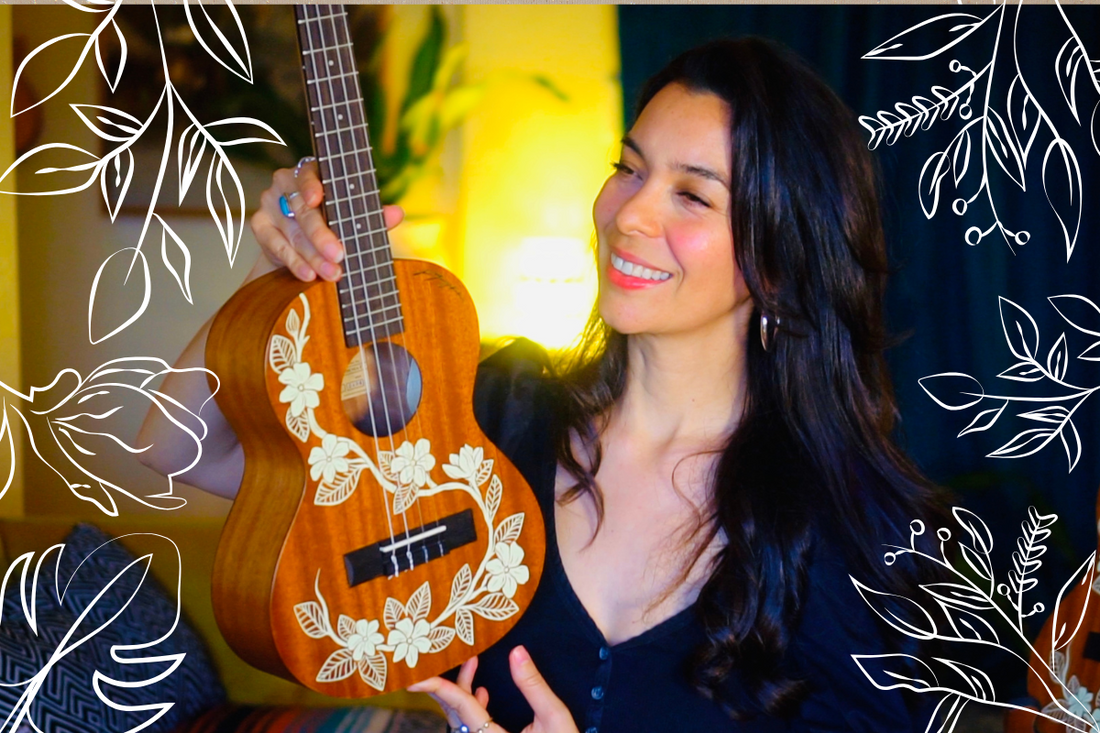
How to Turn Your Tenor Ukulele into a Baby Baritone (No New Ukulele Needed!)
Share
Have you ever wanted to explore the warm, mellow sound of a baritone ukulele—without having to buy a whole new instrument? Good news: You can! In my latest YouTube video, I walk you through how to take a standard tenor ukulele and give it a whole new voice using Baby Baritone Strings from Pepe Romero in my shop.
🌺 Meet the Ukulele I Used: Kala Voyage Collection
For this transformation, I used the Gardenia Tenor Ukulele from Kala’s Voyage Collection—a stunning instrument that’s as beautiful as it is fun to play. With its floral artwork and quality build, it’s the perfect base for exploring different tunings and sounds. This collection is one of my favorites, and you can check it out here:
👉 Hibiscus & Gardenia Kala Ukulele – Voyage Collection
🎵 The Magic is in the Strings: Baby Baritone DGBE
Instead of the standard GCEA tuning you find on most tenor ukuleles, baritone ukuleles are tuned DGBE—just like the highest four strings of a guitar. That deeper, fuller tone is perfect for vocal accompaniment and adds so much variety to your playing.
The Baby Baritone Strings I used are available in my shop, and they come with enough length for two full string changes:
👉 Baby Baritone Strings – DGBE Tuning
These are Pepe Romero fluorocarbon strings, which offer amazing clarity, smooth playability, and fantastic tuning stability.
🧰 What You’ll Need
To change your strings and explore this new tuning, you’ll want to have:
-
A tenor ukulele (I used the Kala Voyage Collection Gardenia Tenor)
-
A tuner (clip-on or app)
-
Nail clippers (for trimming excess string)
-
A string winder (optional, but handy!)
🪄 Quick Guide: How to Change Your Ukulele Strings
-
Loosen the old strings using a string winder or by hand until they’re slack enough to remove.
-
Remove each string carefully from the tuners and bridge.
-
Install the new strings one at a time, threading them through the bridge and wrapping them securely around the tuning pegs.
-
Tighten slowly, making sure each string is properly seated in the nut and saddle.
-
Stretch the strings gently and retune frequently for the first few days—they’ll need a bit of time to settle in.
-
Trim excess string ends with nail clippers.
TIP: Always change strings in a quiet, comfortable space so you can focus and take your time. And don’t worry if it goes out of tune a lot at first—new strings need a bit of breaking in!
💡 Why Add a Baritone Ukulele Sound to Your Collection?
Even if you’re a die-hard soprano or concert player, adding baritone tuning to your musical life opens up so much richness. It’s great for:
-
Vocal accompaniment (especially for lower voices)
-
Guitar-style chord voicings
-
Adding variety to your uke practice
-
Expanding your skills without having to learn a new instrument shape
Plus, it just sounds so beautiful. 💕
If you're ready to dive into the deeper side of ukulele playing, I hope this video and blog post help you take the leap. Let me know in the comments or message me if you try this tuning out—I’d love to hear how it goes!
With love and happy strumming,
– Bernadette
P.S. Want to connect with other uke lovers?
Join us in our online communities and subscribe on YouTube for more tutorials, reviews, and musical fun. 💻🎶

